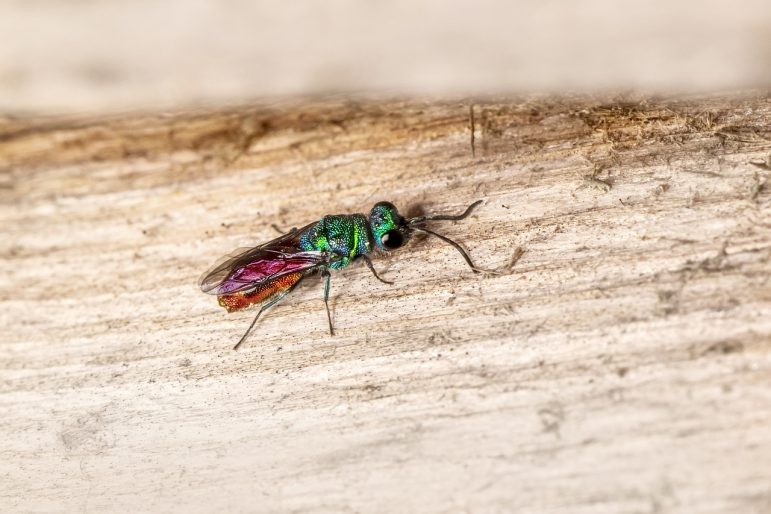Summer is here, and with it comes a lot of positives – warmer temperatures, more active lifestyles, and longer days. This summer may even see a slow emergence from the pandemic, so office workers and those in commercial facilities will be even more celebratory of the season. But the challenge of pest prevention can intensify.
Like us, pests are also more active at this time of year, being driven by three necessities – food, water, and shelter. So, even though cleaning is synonymous with spring, it’s good to do a deep clean each season to help protect your facility against seasonal pests and incoming infestations.
The top offenders in terms of potential pest threats are the best place to start. The checklist below should guide your cleaning and pest prevention plan. Then, set up a walk-through with your pest management provider to pest-proof your facility for the summer months.
- C – Clear clutter where pests might hide. They want what you want – food, water, and shelter. Eliminate potential feeding and harbourage points like cardboard boxes, where cockroaches especially enjoy hanging out – they feed off the glue that holds boxes together. Overcrowded or unorganized storage areas, items on floors, and shelves rarely used all provide hiding spots for pests, so be sure to keep the spaces tidy and clutter-free.
- L – Limit food sources. Pests only need a small amount of food to survive, so food preparation and kitchen/lunch areas should be cleaned thoroughly, with a focus on hard-to-reach spaces and areas where spilled foods or drinks may go unnoticed (like under a vending machine). Food and pantry items need to be kept in tightly sealed containers to reduce odours and prevent pests from entering, and don’t leave food out overnight. Using organic cleaners made with naturally occurring bacteria and enzymes can discourage pests by eliminating the grease and grime they feed on and breed in, especially in and around drains.
- E – Eliminate crumbs and water. Wipe down surfaces and mop floors in areas you don’t typically get to every week, making sure to leave no standing water. Small amounts of moisture can sustain pests for long periods of time, so make sure to repair leaks and water problems as soon as you spot them.
- A – Assess the building’s exterior. Look for cracks, unscreened vents and openings around doors, window screens, and pipes entering the building. Seal any openings with weather-resistant sealant. Clean gutters, point downspouts away from the facility, and work with your landscapers to trim branches, plants, and bushes away from the building.
- N – Nix trash and garbage. Pests see trash as a gourmet meal. Always empty trash receptacles at your properties frequently. With more activity in office buildings now than seen in previous months during the pandemic, use this seasonal cleaning as a time to create a waste-removal schedule for staff. Place dumpsters as far away from your building as possible, and regularly clean and rotate them to eliminate pests or residue that might attract them.
In addition to obvious attractants, you’ll want to be on the lookout for hidden threats that could cause big problems down the road.
- Mould not only indicates the presence of water (which attracts pests), but it can cause allergic reactions or other health hazards.
- As you check around the openings of your facility, pay attention to openings and cracks, both large and small. Rodents can squeeze through spaces the size of half a centimetre, bringing harmful diseases into your facility and potentially contaminating surfaces and any food product.
- Look for sites where birds might have roosted over the winter that need cleaning as well as bird-proofing.
- Inspect rooftops for damages that could result in water damage inside and worn-out or unscreened vents, which birds and rodents can use as an entry point into the building.
Set a realistic yet rigorous schedule for seasonal cleaning, and don’t forget to practice safe storage: store all products in their original containers and regularly dispose of perishable goods as they expire. Get all staff engaged by creating a written sanitation program that has daily, weekly, and monthly benchmarks, and includes staff members’ roles. Remember, it is everyone’s responsibility to help keep a facility free of pests.
As you stay C.L.E.A.N., remember to keep pest prevention and management in mind to create a plan of attack for all potential pest problems. If you do, you’ll be on your way to reducing pest pressures for your facility and creating a healthier environment for everyone to enjoy these post-pandemic summer months.
Alice Sinia, Ph.D. is quality assurance manager of regulatory/lab Services for Orkin Canada, focusing on government regulations pertaining to the pest control industry. With more than 20 years of experience, she manages the quality assurance laboratory for Orkin Canada and performs analytical entomology as well as provides technical support in pest/insect identification to branch offices and clients. For more information, email Alice Sinia at asinia@orkincanada.com or visit orkincanada.ca.










